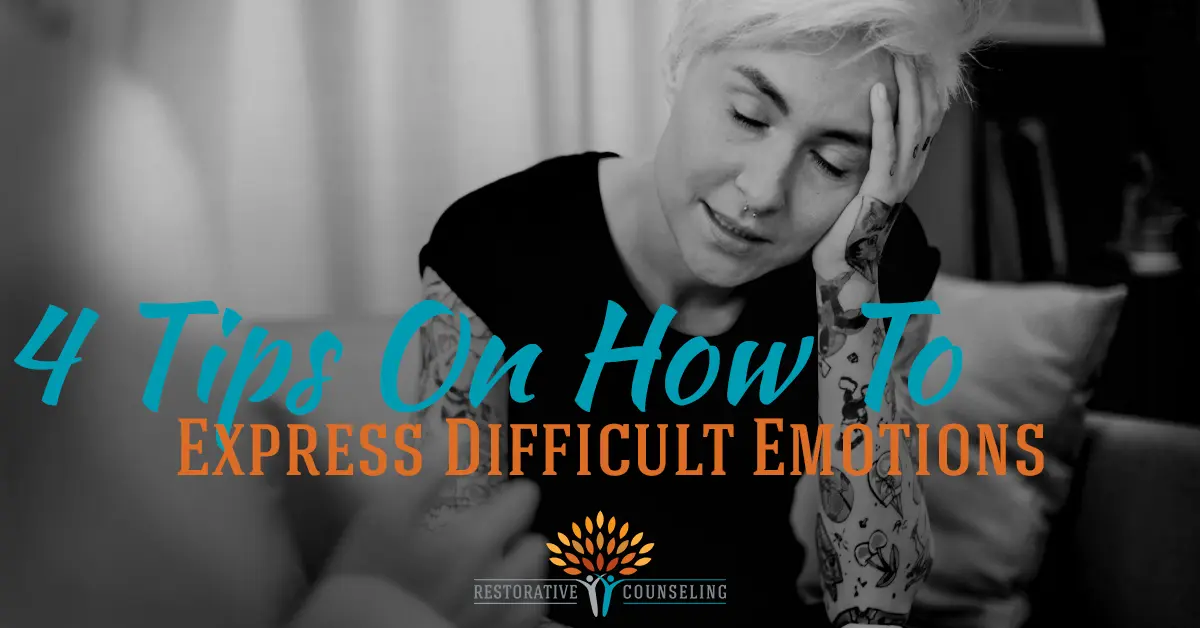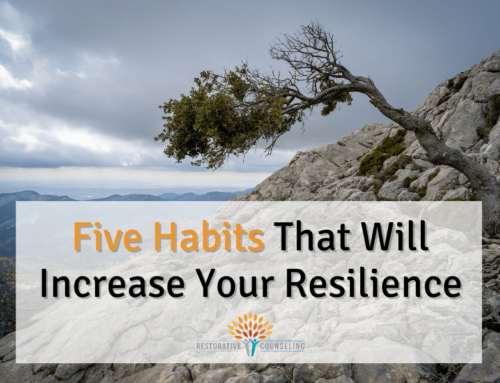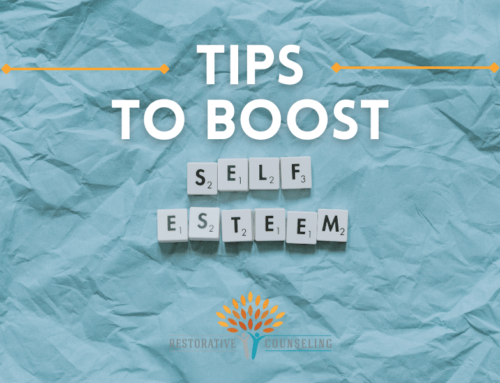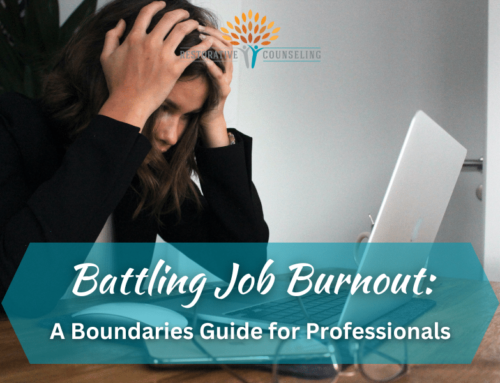Written by The Restorative Counseling Team
Sam’s story with recognizing difficult emotions
It is 5:00 PM on Friday evening and Sam is looking forward to meeting up with his best friend of 5 years, Jay, at their favorite restaurant at 7:00 PM.
Ping! Sam looks down at the glowing screen of his cell phone and sees a text message notification. A thought pops into Sam’s mind: Oh no. Jay is canceling. I know he is canceling.
5:02 pm text message from Jay to Sam:
“Hey Sam. I am so sorry to do this, but I am going to be about 30 minutes late for dinner. Will that be ok? So sorry!”
He tosses his phone across the room and notices that he feels angry and irritated. A week ago, Jay and Sam had plans and Jay canceled.
Sam thinks to himself: I am always on time or early! I don’t understand why it is so hard for Jay to be on time!
Sam feels his face redden and begins to cry.
5:15 pm text message from Sam to Jay: “Hey Jay! No big deal at all! I will see you then!”
Per the original plan, Sam arrives at the restaurant at 7:00 PM. While he is waiting, he feels embarrassed that he is sitting alone, which leads him to feel angry and irritated at Jay.
Jay arrives at dinner 25 minutes late, sits down, and immediately apologizes by saying:
“Sam, I am so sorry. I got caught up at work!”
Sam puts forth his best effort to show Jay that he is not upset, ignoring his churning stomach and sweaty palms.
Sam smiles, laughs nervously, and says:
“It is completely fine!”
He does not want to make things awkward; he wants to enjoy his time with Jay.
Over the course of several months, Sam continues to be “secretly” angry with Jay and begins to resent his friend. Jay does not seem to notice. In fact, Jay describes Sam as a calm, cool, happy-go-lucky, and put-together person, which is exactly how Sam wants to be perceived. Sam is not sure how to open up to Jay without losing control of his emotions and appearing weak. Unfortunately, he continues to feel misunderstood and disconnected in his relationship with Jay.
Sound familiar?
Get support for expressing your emotions to others
Reach Out Today
Why can it be so challenging to share difficult and negative emotions with others?
Stigma around expressing emotions
In today’s society, the outward expression of negative emotions continues to carry a stigma. Some societal messages that feed this stigma include, “Showing sadness is weak,” “Be strong! Don’t cry,” and “Don’t let your anger show.” These messages can make it hard for people to realize that it is okay to express negative emotions.
Feeling alone in your experience
The stigma surrounding expressing negative emotions can become a harmful internal dialogue about needing to “not feel” the feelings. This can cause individuals to feel alone and isolated, and shame and fear of judgment may begin to creep in. Thus, individuals learn to continue to avoid sharing their emotions with others.
Difficulty understanding and processing your emotions
Emotions can be confusing and intense at times. You may recall a time when you thought you felt angry based on your intense reaction to something. Yet, the underlying emotions that you actually felt – such as sadness or fear – got lost in the intensity of the moment. Sometimes, it can be tough to put words to what you are feeling.
Growing up we are taught to filter out our emotions – but this can be harmful in many ways
Human babies are naturally inclined to communicate their feelings by crying when they are hungry, smiling when they are happy, balling up their fists in frustration, etcetera. For some individuals, while growing up, an event or collection of experiences teaches them to be afraid of expressing their feelings. Thus, they then have trouble accessing, experiencing, naming, and communicating their emotions. If you have experienced an event in your life that is difficult to process, please reach out to Restorative Counseling.
Expressing negative emotions with others can be difficult.
But, after you have explored why you are having trouble sharing, you can start to practice opening up to those you trust.
Below are a few tips to increase your confidence when expressing your feelings:
4 Tips to Express Your Emotions
1) Remember that negative emotions are important, too!
It can be helpful to remind yourself that it is okay to feel negative emotions. These emotions, like positive emotions, function like an alarm and alert you to pay attention to something. In changing your perception of negative emotions, you will likely experience them in a manner that feels more helpful.
2) Identify and name your emotions.
Practice hitting the “pause” button when you notice uncomfortable emotions. Become curious about what sensations you are feeling and thoughts you are having. Once you identify your emotion, try saying out loud to yourself, “I am feeling [disappointed, hurt, sad, etc.].” Understanding and naming your emotions yourself will help you communicate them to others. Additionally, the practice of acknowledging our emotions is an act of self-compassion!
3) Take small steps.
If communicating difficult emotions to others is very challenging for you, first try communicating emotions that are the least uncomfortable, such as happy or excited. Over time, experiment with expressing different emotions, increasing the difficulty each time. If you continue to struggle, a licensed clinician can support you in learning how to express your full range of emotions.
4) Be mindful of and curious about the experience.
Try asking yourself probing questions before and after expressing your difficult emotions to another person. Some examples of questions include: What felt uncomfortable? What am I afraid might happen if I reveal my feelings to this person? What is it that I can learn from this experience? Once you have found a question that prompts you to think deeper, spend 3-5 minutes journaling about your reaction. This practice can help you become more in-tune with what feelings you might be avoiding.
So, what does Sam do to process his difficult emotions?
Sam reaches out to his therapist to process his experiences with Jay. During the session, Sam is able to understand what he was feeling and why it was difficult for him to be open with Jay. Sam begins to realize that not only is it okay to experience difficult emotions, but it is also important to express the feelings to his friend. After Sam opens up to Jay about his frustration and disappointment, Sam feels more authentic and confident in his ability to talk about negative emotions.
If you would like to create a healthier relationship with your feelings and learn how to express your emotions more confidently, reach out to the team at Restorative Counseling to schedule an appointment!






